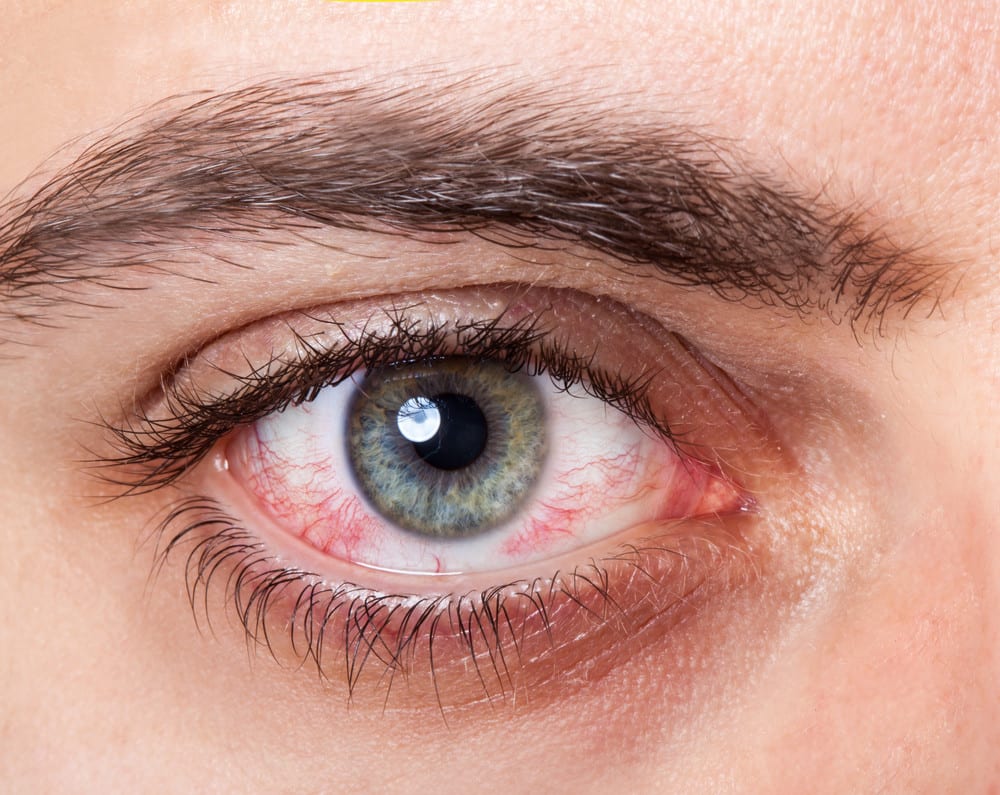Visual symptoms of eye problems may sneak up on you. If the issue forms gradually, it can be hard to notice that there is anything wrong with your vision at all. From blurry and foggy vision to seeing faded colors, you might continue for several months with an eye issue before realizing you even have a problem.
On the other end of the spectrum, certain visual eye changes can occur seemingly overnight. One evening you could close your eyes and sleep soundly, and the next morning you might wake up with red, swollen, or jaundiced eyes. It’s important to familiarize yourself with the appearance of common eye issues so that you know when to contact your eye doctor for help.
Visual Symptoms of Eye Problems
Blurry Vision and Dry Eyes
Blurry vision might seem like an obvious sign that something isn’t quite right with your eyesight. However, it doesn’t always mean you need a glasses subscription to correct the problem. If dry, irritated eyes accompany blurry vision, it could actually be a sign of a nutrient deficiency. Visit your optometrist to have your vision checked and get to the bottom of the issue. He or she may work with your medical doctor to order blood tests that could detect a nutrient deficiency. In rare cases, dry, red, and irritated eyes might indicate an autoimmune disorder like Sjogren’s syndrome.
Red and Watery Eyes
Allergy season often irritates the same people, spring after spring. However, it’s easy to forget that pollen could be the culprit of your eye woes after nine months of allergy-free bliss. If your eyes are swollen, itchy, watery, or red, it could be a sign that Mother Nature is attacking your immune system. Luckily, your eye doctor should be able to prescribe helpful treatments or recommend over-the-counter medications that can keep your eyes feeling and looking healthy.
Yellow Eyes
If the whites of your eyes begin to look yellow, it’s likely a symptom of a larger health issue. When your body has trouble filtering out the compound bilirubin, it can cause your eyes, and even your skin, to temporarily transform into a yellow color. Jaundiced eyes are commonly caused by liver issues and infections. However, rare genetic blood disorders, like spherocytosis, can also be to blame (source). Like most visual symptoms of eye problems, the appearance of yellow eyes is a sign that you should talk to your doctor right away.
Seeing Faded Colors
Has the sky not been looking so blue lately? The weather may not be to blame. Cataracts and other health issues like sickle cell anemia and diabetes can affect how you see color. Or if you’ve always been unable to see some colors at their full vibrancy, you might have color blindness.
_____
For a quick refresher on the common visual symptoms of eye problems, screenshot or print this helpful graphic by All About Vision.
And if you’ve been noticing any visual symptoms of eye problems, play it safe. Book an appointment with your optometrist right away. He or she might be able to detect visual signs of eye problems that you haven’t noticed.
If you live in southwest Missouri, contact Heffington’s. Since 1975, the Heffington family has been assisting the Springfield community with top-quality eye care and affordable eyeglasses and contacts. One of the unique features of our family-owned business is that we manufacture lenses at our own laboratory, giving us total control over the service and pricing, and we’re happy to pass our savings on to you. To learn more about our products and services, please get in touch with us online, send an email to asktheexperts@heffingtons.com, or give us a call at 417-869-3937 (Optiland location) or 417-882-3937 (House of Vision location). We look forward to hearing from you!

